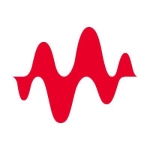What is our primary use case?
I use it regularly for both wired and wireless troubleshooting, performance testing, and verification.
I am a customer and beta tester for NetAlly.
How has it helped my organization?
One of the reoccurring things that you will see here is it makes it really easy for me to hand this solution to someone else and get them to provide me consistent results. Often, especially in WiFi, one of the problems which occurs is we have highly specialized tools that take a lot of training and years of experience to optimally use. However, in the case of AirMapper, it's really easy for me to quickly demonstrate to someone, "Here is how you use the program," so they can create a heatmap of an area that I may not be at, whether it's across the city, state, or country. It's easy for me to provide that support. Then, the data is easy to review on Link-Live (almost instantaneously) once they are finished completing that walking survey. The most important feature is that those heatmaps do go to Link-Live and are accessible on Link-Live.
When it comes to that remote troubleshooting perspective of being able to survey an area to see if there are problems, make adjustments, and then have that same individual resurvey that same area, I don't have to send people to a week long class on how to use the device. I know I am getting consistent results, which can verify near real-time, and whether or not the changes that I have implemented solve the problem.
The AutoTest feature has improved the way our company functions. With any large enterprise, you regularly have separation of duties. Your systems teams are generally responsible for your DNS and DHCP services. These are not a network function. In some situations, you might even have a security team who is responsible for managing the back-end services: RADIUS, ClearPass, or ACS, which are the back-end for 802.1x. Sometimes there can be a situation where a user reports, "A wireless problem", but the reality is that the wireless is functioning perfectly. The responsible party might be the systems team, the security team, or it maybe something non-related. Because the AutoTest checks and verifies each of those steps, this provides a clear, very easy to understand, dissected explanation. Then, the device is able to associate and authenticate, completing the four-way handshake, that gets the encryptions working.
For example, if AutoTest was able to get an IP address, but as soon as it tried to do a DNS lookup, things failed. This is a really easy way of now going to talk to the systems team and saying, "Hey, we have a DNS problem. This isn't a WiFi problem, and it's not a problem in the wireless network. This is a DNS server that's not responding. Let's dig into why". It has clear test procedures that provide very clear, easy to understand results that make it simple for anyone to do some basic troubleshooting. More importantly, they can dive deep quickly into a problem to identify the source rather than just simply relying on a user's experience.
What is most valuable?
The most valuable feature would be the wireless testing capability.
The newer features are becoming part of my workflow as well with AirMapper by being able to display coverage in a particular area, e.g., doing small surveys in a particular room or area.
The ability to remotely troubleshoot: Being able to connect it up from my desk, then do wireless testing (or something along those lines) elsewhere.
The Ethernet testing and verifying for the network connection makes sure it:
- Goes into an access point or device.
- Correctly configured.
- Provides the proper POE
- Has the correct links.
- Verifies that my cable installers are delivering on what they promised.
I know when I run AutoTest what I should expect as far as response times from DHCP and DNS. It allows me to create a consistent test that runs exactly the same way every time. Then, whenever I hand it to someone else who isn't as familiar with all of the individual steps, I know that as long as they're running that AutoTest profile, it's the exact same thing as me being there running the testing. Because those results are consistent, when there are inconsistencies, I can assume that it is network or system related rather than user related.
Link-Live's ability to visualize key performance metrics covers the basics quite well. It provides me enough information so I can go, "Yes, this is a signal problem or an SNR problem." Then, I can take it to the next step, "Okay, it's not a physical layer problem because signal, SNR, and all of those things meet expectations. Or, it points out those areas." I can't say that it provides all of the metrics I need, but at least it provides that quick view so I can look at the basics of the physical RF and verify that those do/don't meet the specifications.
This solution provides visibility into our network that we could only get by using many other tools. While there are other tools that provide the same function, it does a great job of covering the basics of a lot of tools all in a single package. For example, some of the other alternatives out there for testing networks end-to-end will do that perfectly fine, but they don't do heatmapping. Ultimately, it's a single toolbox that my support staff and I need to learn. This is rather than having six different solutions that each do their own thing. It's a single device/solution, where if you learn it and learn it well, you can replicate results from disparate systems.
What needs improvement?
The test profiles could be improved a bit. It could be better at managing and adding them, but more importantly, switching between different profiles. Some of the results from the tests could go a little deeper - maybe with an expert mode that allows you to review the pcap for any part of the process, such as, an automatic pcap generation. Especially on Link-Live, I would love it if they would make it so that you could see the capture file. For example, if you go to the DCP request portion of that report, then in a second screen, it will show you the capture file in the pcap. I think there is a lot of ability to improve this area.
I would love to see port profiles. This is something I've expressed to them. The ability for a technician to plug it into a switch port, and say, "Okay, this port will be an access point or this port will be a phone and desktop PC," thus choosing a profile. It will then push a configuration to the device it's connected to and verify that the switch port is correctly configured, so I can hand this to a phone tech who doesn't have any access to a network switch to be able to make changes. They can go out and plug this into a port, then they are able to push a profile to the switch port through the device. That would be pretty fantastic as a next step for this device.
For how long have I used the solution?
What do I think about the stability of the solution?
I handle maintenance for the devices, which includes:
- Semi-regularly, NetAlly pushes out firmware updates, which are fairly easy to run via Link-Live.
- Quarterly, checking firmware updates and ensuring that everything is up-to-date.
- The initial setup and configuration of the AutoTest profiles and those components.
What do I think about the scalability of the solution?
There are five people who use EtherScope in my company. Their roles include network admin, network engineer, server and system admin, and unified communications admin.
How are customer service and technical support?
I have not used NetAlly's techincal/customer support for this solution.
Which solution did I use previously and why did I switch?
Previously, I used some older Fluke devices before going with EtherScope.
I have been really impressed with NetAlly and the way they are advancing the product. Every year, they release a new major revision. Those major revisions are incorporating features that customers have asked for. They are incorporating new capabilities into the existing piece of hardware which expands its capabilities. That is the biggest thing followed by the ease of use for people who I might hand it to.
What was our ROI?
We have seen ROI in man-hours, time to resolution by shortening the time that systems are down and affecting users, and its ability to find problems before they are experienced by end users (dealing with the problem before it is a problem).
EtherScope has reduced our troubleshooting times. I think the average person who goes from no tools to this tool would probably see a 20 or 30 percent reduction in time to repair or resolution. I have so many tools, if anything, sometimes it might take me the longer to just decide which tool I want to use.
The solution has made our networking staff more productive. From the perspective of my junior network admin whom I regularly hand this tool to, it probably saves one or two man-hours a week because of the all-in-one interface. This allows him to troubleshoot wired and wireless quickly.
The learning curve is moderate. I don't think this is a device that you can just simply hand to somebody and say, "Here it is. Use it." I think AirCheck G2 (another one of NetAlly's devices) is that the type of device where I can pretty much hand it to somebody who has never used it before. I can let them play with it for five minutes and maybe answer a question or two, then they are ready to go. I don't think EtherScope is that easy, but I do think that it is easy enough that I can spend 35 or 40 minutes with someone showing them the ins and outs of the device, then they can use it for most of their tasks. While the learning curve is moderate, spending 30 minutes teaching someone how to use this device can save me hours. Therefore, I feel like there is a really good return on the investment of my time in doing the training, because it's not such a complex device that I have to send them off for a week of training just to be able to use it.
What's my experience with pricing, setup cost, and licensing?
For the average network shop, the cost is a bit high. In a lot of organizations, people don't share test devices between teams. Generally, you need a device for the network team and a device for the system team, the security team, etc. While the cost is a little on the high side, that is offset by the regular updates and continued improvements that NetAlly adds to the device. Those improvements continue to increase the perceived value of the device.
Which other solutions did I evaluate?
I pretty much use all the solutions in one form or another because I do a lot of testing for a bunch of companies. So, I have definitely evaluated a lot of other products.
I also use NetAlley AirCheck G2.
What other advice do I have?
I would tell other engineers to decide what their total testing needs are:
- To resolve whether or not they need wired and wireless testing?
- Do they need to be able to test copper and fiber?
- Do they need to be able to test just pure physical and verify that the cabling is correctly installed? Or, do they need to be able to test Layers 2, 3, and 4, as far as verifying that the network is fully functioning and network services are available?
- Is the Internet available in their internal servers and external servers? Is it responding?
I would tell them to look at what they need to test, then look at the devices which are capable of running what they need to test. If they find themselves in a situation where they do need to test all of those various things, then I don't think they are going to find a better all-in-one solution than EtherScope.
Would it make sense to hand a EtherScope nXG to a cabling guy? No, it absolutely doesn't. I wouldn't recommend that. However, so many of us perform lots of roles, have to troubleshoot, and test in a lot of different scenarios. In those situations, we do need a tool that is capable of testing all of the various layers, both wired and wireless, and can verify things remotely. EtherScope is a single tool that performs all of these tasks.
I have only tested to 1 gig at this point.
I would rate it a solid eight. I think that there are a lot of places it could be improved, but for the average user, it solves the majority of their problems and concerns.
Disclosure: PeerSpot contacted the reviewer to collect the review and to validate authenticity. The reviewer was referred by the vendor, but the review is not subject to editing or approval by the vendor.





